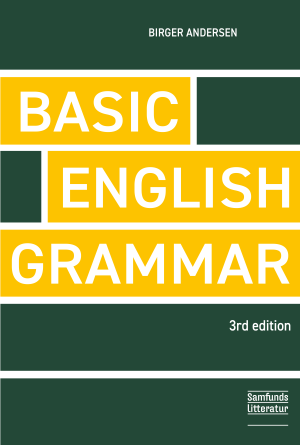Abbreviations and symbols 10
1. Introduction 13
Part I: Understanding Sentence Analysis 19
2. Sentence analysis 21
2.1 What is a sentence? 21
2.2 What is analysis? 23
2.3 Simple, compound and complex sentences 24
2.4 Types of sentences 26
3. Basic clause structure 34
3.1 Constituents 34
3.2 Functions of clause constituents 39
4. Clause functions 41
4.1 The verb 41
4.2 The subject 46
4.3 The direct object 49
4.4 The subject complement 50
4.5 The object complement 53
4.6 The indirect object 54
4.7 Adverbials 57
5. Phrase structure 61
5.1 Introduction 61
5.2 The verb phrase 63
5.3 The noun phrase 66
5.4 The adjective phrase 80
5.5 The adverb phrase 83
5.6 The prepositional phrase 83
6. Subordinate clauses 87
6.1 Introduction 87
6.2 Finite subordinate clauses 90
6.3 Non-finite subordinate clauses 106
6.4 Dangling participles 111
6.5 The full sentence tree 114
7. Peripheral clauses 117
7.1 Tag questions 117
7.2 Parenthetic clauses 118
7.3 Sentential relative clauses 118
8. Coordination 120
Part II: The Major Word Classes 123
9. Nouns 125
9.1 What is a noun? 125
9.2 Noun suffixes 125
9.3 Noun classes 128
9.4 The genitive 133
9.5 Reference 136
10. Verbs 141
10.1 What is a verb? 141
10.2 Verb suffixes and prefixes 141
10.3 Verb forms 142
10.4 Auxiliary verbs 145
10.5 Tense 146
10.6 Aspect 148
10.7 Future reference 152
10.8 Modal auxiliaries 154
10.9 Multi-word verbs 161
11. Adjectives 169
11.1 What is an adjective? 169
11.2 Adjective suffixes 169
11.3 Adjective classes 171
11.4 Gradability and comparison 175
11.5 Adjectives as NP-modifiers 178
12. Adverbs 181
12.1 What is an adverb? 181
12.2 Adverb suffixes 181
12.3 Gradability and comparison 182
13. Pronouns 184
13.1 Introduction 184
13.2 Personal pronouns 185
13.3 Possessive pronouns 186
13.4 Reflexive pronouns 187
13.5 Demonstrative pronouns 189
13.6 Reciprocal pronouns 190
13.7 Interrogative pronouns 190
13.8 Relative pronouns 192
13.9 Indefinite pronouns 193
Part III: Usage Problems 195
14. Subject-verb agreement 197
14.1 Introduction 197
14.2 Singular nouns ending in -s 197
14.3 Quantity phrases 200
14.4 Collective nouns 201
14.5 Coordinated subjects 201
14.6 Pronouns 203
14.7 Anticipatory subjects 205
15. Constituent order 206
15.1 Introduction 206
15.2 Front-focus 207
15.3 End-weight 207
15.4 Inversion 208
15.5 Position of adverbials 210
16. Punctuation 215
16.1 Introduction 215
16.2 Comma 215
16.3 Semicolon 219
16.4 Colon 219
16.5 Dash 220
Bibliography 222
Index 224



